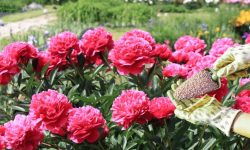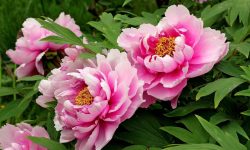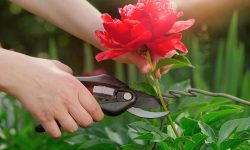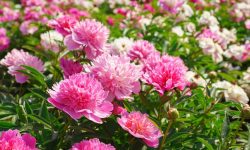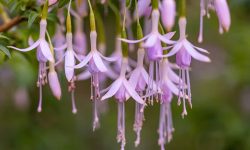Hydrangeas are cherished flowering shrubs that have long been a staple in gardens worldwide. Their spectacular, lush blooms come in a variety of colors and forms, adding charm and vibrancy to any landscape. However, to truly maximize the beauty and longevity of your hydrangeas’ flowering, simply planting and watering isn’t enough. Proper maintenance techniques such as deadheading—removing spent flowers—play a crucial role in promoting more prolific and longer-lasting blooms.
In this comprehensive guide, you will learn everything about deadheading hydrangeas, including when and how to do it, how it impacts your plant’s health, specific techniques for different hydrangea types, and how to integrate deadheading with overall care to create a thriving, flower-abundant garden.
Understanding the Importance of Deadheading Hydrangeas
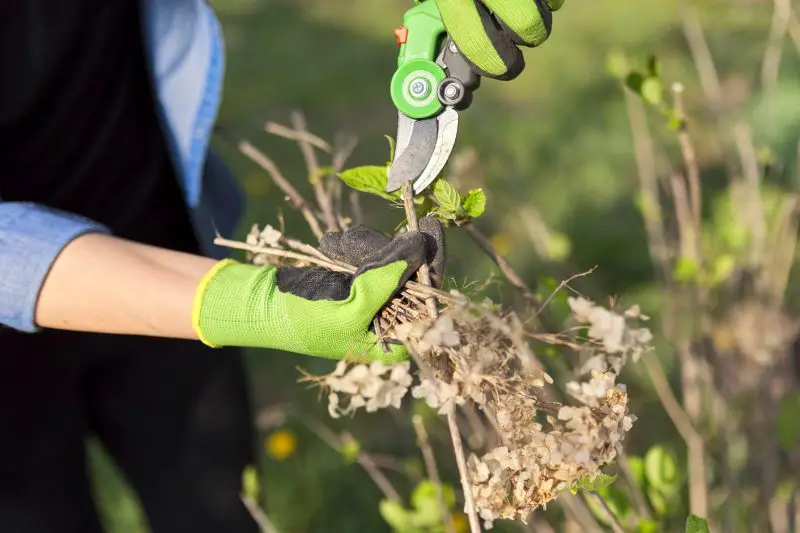
Deadheading is the horticultural practice of cutting or pinching off faded or dead flowers from plants. While this may seem like a minor detail in gardening, it profoundly influences how well a hydrangea produces flowers in the current and subsequent seasons.
Hydrangeas invest a significant amount of energy into producing blooms. Once a flower is spent, if left on the plant, the hydrangea will shift its resources toward seed production and maturation rather than generating new flowers. Removing these spent blooms redirects the plant’s energy towards continued flower development and healthier overall growth.
Additionally, deadheading enhances the visual appeal of your hydrangea. Old, brown, or wilted flowers can detract from the beauty of an otherwise healthy plant. Regular removal of these flowers keeps your shrubs looking fresh, neat, and vigorous.
Moreover, deadheading can also help prevent the spread of diseases and reduce insect infestation. Decaying flowers can harbor fungal spores or attract pests, so maintaining clean, deadflower-free plants reduces these risks.
When to Deadhead Hydrangeas: Timing is Key
The timing of deadheading your hydrangeas largely depends on the species and the type of wood on which they bloom. Hydrangeas are generally divided into two groups based on their blooming habit: those that flower on old wood and those that flower on new wood. Understanding this distinction is essential to deadheading effectively without compromising future blooms.
Hydrangeas That Bloom on Old Wood
Bigleaf hydrangeas (Hydrangea macrophylla), including mophead and lacecap varieties, and oakleaf hydrangeas (Hydrangea quercifolia), typically bloom on old wood. This means their flower buds are formed on branches that grew the previous season, often in late summer or fall.
For these types, the ideal time to deadhead is shortly after the flowers fade but before late fall. Removing spent flowers soon after they wilt helps keep the shrub tidy and encourages energy conservation. However, avoid pruning or deadheading late in the season, as this can inadvertently remove flower buds for the next year, drastically reducing your blooms.
In many regions, deadheading bigleaf hydrangeas is best done from late summer to early fall. Waiting too long may result in lost buds and a less vibrant display the following season.
Hydrangeas That Bloom on New Wood
Panicle hydrangeas (Hydrangea paniculata) and smooth hydrangeas (Hydrangea arborescens) produce flowers on new growth each year. Because their flower buds form on current season’s shoots, they are more forgiving when it comes to pruning and deadheading.
For these hydrangeas, deadheading can be done throughout the growing season whenever flowers fade, encouraging additional blooms later in summer and early fall. This practice helps promote multiple flushes of flowers, ensuring the shrub remains showy for longer periods.
Moreover, these hydrangeas can be pruned back aggressively in late winter or early spring to shape the plant without worrying about losing flower buds.
How to Deadhead Hydrangeas Properly
Deadheading hydrangeas is a simple task, but it requires care and attention to detail to avoid damaging the plant or hindering future flower production. Here’s a detailed explanation of the correct method:
Identifying Spent Flowers
Start by examining your hydrangea to identify flowers that have completed their bloom cycle. These flowers will often show signs of discoloration, typically turning brown, tan, or grayish. The petals may become papery or shriveled. Sometimes, you might also see seed pods forming in place of old flowers.
Carefully differentiate between flowers that are truly spent and those that are still healthy. Removing flowers prematurely can reduce bloom longevity, so patience is important.
Selecting Tools and Technique
For delicate hydrangeas, deadheading can often be done by hand. Pinching off the spent flower with your thumb and forefinger is effective and minimizes damage. However, for thicker stems or older wood, using sharp, clean pruning shears or scissors is recommended.
Before using tools, ensure they are sterilized to prevent transferring diseases from other plants. You can wipe blades with rubbing alcohol or a solution of diluted bleach.
Cutting at the Proper Location
When cutting off spent flowers, trim the flower stem just above the first set of healthy leaves or buds. This encourages the plant to focus growth energy at this node, promoting branching and new flower development.
Avoid cutting too far down into old, woody stems, especially on varieties that bloom on old wood, to preserve next year’s buds. For hydrangeas that bloom on new wood, you have more flexibility to prune lower to rejuvenate the plant.
Cleaning Up
After deadheading, remove the cut flowers and any debris from around the plant. This helps prevent fungal infections and pest infestations, which can thrive in decaying organic matter.
Deadheading Tips for Different Hydrangea Types
Knowing the specific needs of your hydrangea variety helps you apply deadheading techniques more effectively.
Bigleaf Hydrangeas (Hydrangea macrophylla)
Bigleaf hydrangeas are among the most common garden hydrangeas, prized for their large mophead or delicate lacecap blooms. These plants bloom on old wood, so you need to be careful not to remove flower buds destined for the following year.
After the blooms fade, gently deadhead by pinching or cutting off the old flower heads just above a healthy set of leaves or buds. This cleanup not only improves appearance but also redirects energy into strengthening stems and roots. Avoid heavy pruning or deadheading late in the season, as it may reduce next year’s flowers.
Panicle Hydrangeas (Hydrangea paniculata)
Panicle hydrangeas produce elongated cone-shaped flower clusters on new wood, making them more resilient to pruning. You can deadhead faded blooms anytime during the growing season to stimulate additional flower production.
In late winter or early spring, panicle hydrangeas can be cut back hard to encourage vigorous growth and larger flower heads. Deadheading faded flowers during summer encourages continued blooming into fall, extending the display.
Smooth Hydrangeas (Hydrangea arborescens)
Smooth hydrangeas, such as the well-known ‘Annabelle,’ also bloom on new wood and tolerate heavy pruning. Regular deadheading throughout the growing season is beneficial and encourages the plant to produce new flowers.
Because smooth hydrangeas bloom on new growth, you can safely deadhead without concern about losing next year’s flowers. This practice is especially effective in prolonging the flowering season.
Oakleaf Hydrangeas (Hydrangea quercifolia)
Oakleaf hydrangeas are distinguished by their unique foliage and cone-shaped blooms. Like bigleaf hydrangeas, they flower on old wood, so deadheading must be done carefully after flowering.
Removing spent flower heads helps tidy the shrub and can improve airflow, reducing fungal problems. Be cautious not to prune or deadhead too late in the fall to preserve flower buds for the next year.
Integrating Deadheading with Overall Hydrangea Care
Deadheading is one essential element in caring for hydrangeas but works best when combined with other gardening practices.
Watering Hydrangeas Adequately
Hydrangeas thrive with consistent moisture. Insufficient watering stresses plants and limits flower production. During dry or hot periods, regular deep watering is crucial. Mulching around the base conserves soil moisture, reduces weeds, and keeps roots cool.
Fertilizing to Support Blooming
A balanced fertilizer applied in early spring feeds your hydrangea and encourages strong growth and abundant flowers. Avoid excessive nitrogen fertilizer, which can promote leafy growth at the expense of blooms. Instead, opt for fertilizers formulated for flowering shrubs or apply compost for slow nutrient release.
Pruning Techniques Beyond Deadheading
For hydrangeas blooming on new wood, like panicle and smooth types, pruning in late winter or early spring helps maintain shape and stimulates flower production. For old wood bloomers, avoid heavy pruning in spring and focus on deadheading after flowering to maintain health without sacrificing buds.
Protecting Flower Buds in Cold Climates
In areas with harsh winters, flower buds of old wood bloomers can suffer damage from frost. Applying a thick mulch layer or covering the plant with burlap during winter protects these buds, ensuring a robust bloom in spring.
Common Deadheading Mistakes and How to Avoid Them
Many gardeners unintentionally reduce hydrangea flowering by making errors during deadheading.
Deadheading at the Wrong Time
Cutting back too late in the season on old wood bloomers removes flower buds, leading to fewer or no blooms the following year. Always deadhead soon after flowers fade and avoid late fall pruning on these types.
Removing Too Much Growth
Overzealous cutting can stress plants and reduce their vigor. Only remove the spent flowers and a small portion of the stem above healthy leaves.
Using Dirty Tools
Unclean pruning tools can spread disease. Sterilize your shears before and after use to protect your hydrangeas.
Neglecting General Plant Health
Deadheading alone cannot compensate for poor care. Water stress, poor soil, or insufficient light will limit flowering regardless of deadheading.
How Deadheading Affects the Flowering Cycle of Hydrangeas
Deadheading not only removes old flowers but also influences the plant’s internal hormonal balance. When flowers begin to fade naturally, they send signals to the plant that the reproductive cycle is ending. This signals the plant to slow down flower production and begin seed formation.
By cutting off the spent blooms early, these signals are disrupted, tricking the hydrangea into continuing to produce new flowers rather than moving into seed production. This results in an extended bloom period with more flowers appearing later in the season.
This process is especially effective for hydrangeas that bloom on new wood, as they have the capacity to generate multiple flushes of flowers on new growth. For old wood bloomers, the benefit is more about maintaining plant health and ensuring the next year’s buds are preserved.
Seasonal Care Routine to Maximize Deadheading Benefits
A successful hydrangea garden requires a year-round approach that incorporates deadheading into a broader care routine.
In early spring, inspect the plant for any winter damage and prune as appropriate based on the hydrangea species. Apply fertilizer to kickstart growth.
During the growing season, deadhead regularly to keep the plant looking fresh and to encourage continuous blooming. Keep soil moist but well-drained, and mulch to conserve moisture.
As summer transitions to fall, perform a final round of deadheading on old wood bloomers to prepare the shrub for winter. Protect vulnerable buds with mulch or coverings if your climate is prone to frost.
By following this routine, your hydrangeas will reward you with more abundant and longer-lasting flowers every year.
FAQ About How to Deadhead Hydrangeas
What does deadheading hydrangeas mean?
Deadheading hydrangeas means removing spent or faded flowers to encourage the plant to produce more blooms and maintain a tidy appearance.
When is the best time to deadhead hydrangeas?
The best time depends on the hydrangea type. For old wood bloomers like bigleaf hydrangeas, deadhead after flowering in late summer or early fall. For new wood bloomers like panicle hydrangeas, deadhead throughout the growing season.
Can deadheading hydrangeas improve flower production?
Yes. Removing spent flowers redirects the plant’s energy from seed production to new flower growth, resulting in more abundant blooms.
How should I deadhead hydrangeas properly?
Cut or pinch off the faded flower just above the first healthy leaf or bud on the stem, using clean tools or fingers to avoid damaging the plant.
Does deadheading harm hydrangeas?
When done correctly and at the right time, deadheading does not harm hydrangeas but actually promotes healthier growth and extended flowering.
Conclusion
Deadheading hydrangeas is a vital gardening practice that goes beyond simple aesthetics. When done correctly and at the right time, deadheading directs the plant’s energy into producing more flowers, prolongs the blooming season, and keeps your shrubs healthy and vigorous.
By understanding the type of hydrangea you have and tailoring your deadheading approach accordingly, you can avoid common pitfalls that reduce flowering. Coupled with proper watering, fertilizing, pruning, and winter protection, deadheading will help you create a stunning garden filled with lush, vibrant hydrangea blooms season after season.
Start incorporating deadheading into your hydrangea care today, and enjoy the rewarding sight of your plants bursting with bigger, better, and more abundant flowers.

